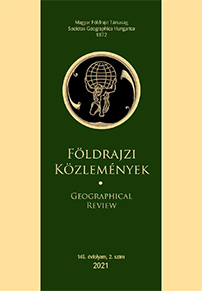Competitiveness Typology of Hungarian Middle-sized Cities and Their Potential to Attract Human Capital
Abstract
AbstractIn the context of globalization, cities and metropolitan areas are playing an increasingly important role compared to regions, in parallel with growing urban-rural disparities. In addition to economic factors, social and cultural factors that make a city attractive to young, creative populations play a more important role than ever before.
The research attempts to typify the fifty-eight Hungarian middle and large sized cities with more than twenty thousand inhabitants on the basis of their infrastructure, as well as their economic and socio-cultural characteristics. It then presents the behaviour of different city types based on additional variables. Relevant variables were selected by principal component analysis, then the investigated settlements were classified into five clusters based on the four principal components. Also, a secondary analysis has been done to examine correlations between cluster membership and demographic characteristics of the member cities (percentage of young people between 20-39, of the educated population, and of population commuting, population size). Regarding cluster membership along with the rate of young people between 20-39 there was no significant difference.
Examining the members of the clusters, it can be seen that Budapest plus its agglomeration have an even greater spatial structural effect than expected. Another important result is that the present cluster analysis shows unquestionably the east-west division of Hungary. However, there are also clear developmental breakdowns along the distribution of past or present industrial production.
Copyright (c) 2021 Virág Varga, Dorottya Teveli-Horváth, Gergely Horzsa

This work is licensed under a Creative Commons Attribution-NonCommercial-NoDerivatives 4.0 International License.



